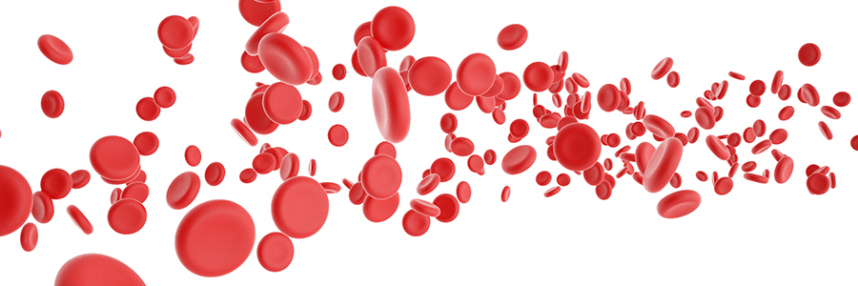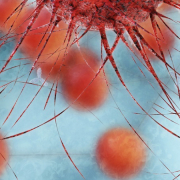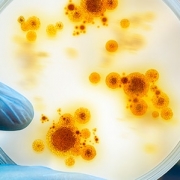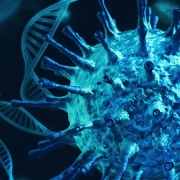A shot of young blood: from the divine to epigenomics
Exploring the evolution of the blood transfusion, from 17th century experiments to cell rejuvenating potential of new treatments
1666 was a year of great turmoil in London. The Great Plague which started the previous year had killed an estimated quarter of its population. Sir Christopher Wren the polymath was working on a restoration of the crumbling St Paul’s Cathedral with its tall conical spire when it was destroyed in that year’s Great Fire. The domed Cathedral that graces the London skyline today was Wren’s new masterpiece; not bad for a Professor of Astronomy at Oxford.
Sir Christopher had four years earlier, with other leading lights that included Robert Boyle (chemist) and William Croone (physician), obtained a Royal Charter from Charles II, the recently restored King of England, Scotland and Ireland, to establish the Royal Society, a scientific academy that still exists today, writes Alain Li Wan Po.
Early experiments in blood transfusion
Wren was intrigued by William Harvey’s work on blood circulation and experimented with intravenous injections and blood transfusions. Thanks to William Pepys, a naval administrator and outstanding diarist of the English Restoration, who later followed Sir Christopher as President of the Royal Society, we have an account of blood transfusions performed in front of its august members.
Dr Croone related to Pepys how the initial experiments were in dogs, ‘a little mastiff and a spaniel with very good success, the former bleeding to death, and the latter receiving the blood of the other, and emitting so much of his own, as to make him capable of receiving that of the other.’ A week later, the spaniel ‘was produced and found very well.’ In Dr Croone’s view, this approach ‘may, if it takes, be of mighty use to man’s health, for the amending of bad blood by borrowing from a better body.’
The Society’s members were sufficiently emboldened to progress to human studies. The first human guinea pig was Arthur Coga, a Cambridge Latin-speaking divinity graduate, about 32 years of age, described as ‘half-mad’, with a brain that ‘was sometimes a little too warm’, and ‘poor and debauched.’ The College had hired him for 20 shillings to have some sheep’s blood let into his body, thinking ‘it may have a good effect on him as a frantic man by cooling his blood.’ Coga was otherwise a healthy man, and thus expected to ‘be able to give an account what alteration, if any, he do find in himself, and so may be useful.’
The experiment was carried out on 21 November 1667 ‘in the presence of many spectators of quality, and four or five physicians’. They proposed ‘to let in about twelve ounces; which, they compute, is what will be let in in a minute’s time by a watch.’
Given what we now know about inter-species blood compatibility, it is surprising to learn that Arthur Coga survived to tell the tale. Asked why he chose to have sheep blood instead of that of any other animal, he explained, in Latin, which he ‘spoke well when in company which he liked’, that it was symbolic of the blood of Christ, the Lamb of God. Nine days later, Pepys was delighted to see Coga who ‘finds himself much better, and as a new man.’ However, Pepys judged that he was ‘cracked a little in his head, though he speaks reasonably, and very well.’
Blood transfusion from ‘a better body’ to ‘amend bad blood’ did not make much progress for the next 250 years, but by then a better understanding of blood incompatibility between animal species and between human individuals had emerged and the genetics of blood was better understood. Today millions of gallons of blood are collected annually for blood replacement for various medical indications, though haematopoietic stem cell transplantation for various leukaemias is perhaps closest to Croone’s vision of ‘bad blood’ replacement.
The benefits of young blood
Two centuries after the experimentation by Pepy’s eminent contemporaries, French investigators studied the linking of the blood circulations (parabiosis) of animals. Charles-Édouard Brown-Séquard was independently promoting animal testicular extracts for rejuvenation at the time, the origins of what is now endocrinology. Given this background, the study of parabiosis led naturally to renewed interest in the study of the effect of ‘young blood’ on older animals through heterochronic (in animals of different age) parabiosis (HP). The results were rather mediocre and until recently, the study of this approach to rejuvenation was perceived as one for those slightly ‘cracked in the head.’
This view is too cynical, as some serious research has been done, for example to identify exchange and induction of growth-related and immune-related factors that may affect ageing. Genomic studies have investigated the impact on molecular signalling pathways. Some mouse experiments have shown that HP can improve hypertrophied hearts, with possibly explanatory changes in gene expression. Other studies indicate that the blood of young mice can rejuvenate the stem cells of old mice. Memory and the learning of new tasks by elderly mice have also been reported to improve with the injection of ‘young’ blood.
Prospects for new therapies
Testosterone level is known to decline with ageing, but straightforward replacement does not produce the expected results. Hopefully, HP studies could lead to development of better anti-ageing therapies, which are eagerly sought. Impatient investigators have started clinical studies of blood transfusion and stem cell transplantation, fuelling what has been described as health tourism as patients flock to participate. The US Clinical Trials Registry describes a trial, with a debatable design, currently recruiting Alzheimer’s disease patients, each of whom pays $8000 for participation. This is causing commotion not only in the blood of the recipients but among human trial ethicists.
Further east, the Koreans are investigating possible anti-ageing effects of cord blood. Rebalancing the humours of the body seems to be striking a common cord among Eastern and Western medicine men, just as it did at the time of Hippocrates and the early Chinese emperors. However, in the genomic era, for ‘humours’ read ‘transcription factors’, and for ‘rebalancing’ read ‘epigenetic control of gene-expression’.
Professor Alain Li Wan Po is editor-in-chief of the Journal of Clinical Pharmacy and Therapeutics, and is a fellow of the Royal Pharmaceutical Society and the Royal Statistical Society
–









